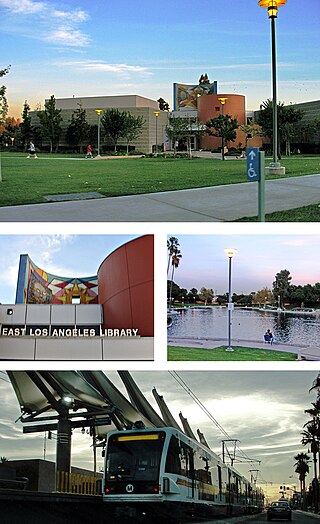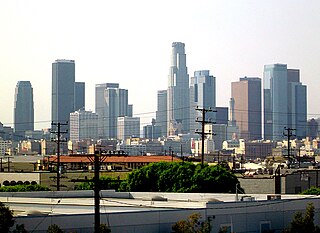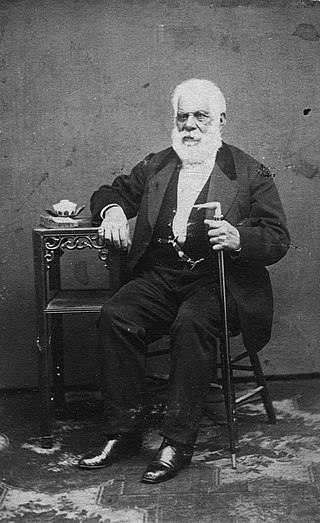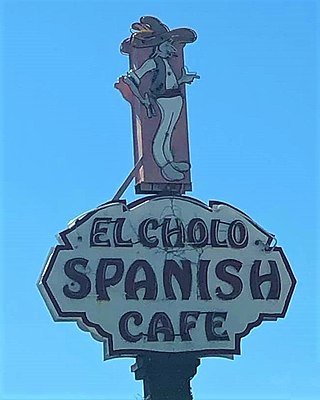
Chicano or Chicana is an ethnic identity for Mexican Americans who have a non-Anglo self-image, embracing their Mexican Native ancestry. Chicano was originally a classist and racist slur used toward low-income Mexicans that was reclaimed in the 1940s among youth who belonged to the Pachuco and Pachuca subculture. In the 1960s, Chicano was widely reclaimed in the building of a movement toward political empowerment, ethnic solidarity, and pride in being of indigenous descent. Chicano developed its own meaning separate from Mexican American identity. Youth in barrios rejected cultural assimilation into whiteness and embraced their own identity and worldview as a form of empowerment and resistance. The community forged an independent political and cultural movement, sometimes working alongside the Black power movement.

A rave is a dance party at a warehouse, club, or other public or private venue, typically featuring performances by DJs playing electronic dance music. The style is most associated with the early 1990s dance music scene when DJs played at illegal events in musical styles dominated by electronic dance music from a wide range of sub-genres, including drum and bass, dubstep, trap, break, happy hardcore, trance, techno, hardcore, house, and alternative dance. Occasionally live musicians have been known to perform at raves, in addition to other types of performance artists such as go-go dancers and fire dancers. The music is amplified with a large, powerful sound reinforcement system, typically with large subwoofers to produce a deep bass sound. The music is often accompanied by laser light shows, projected coloured images, visual effects and fog machines.

East Los Angeles, or East L.A., is an unincorporated area situated within Los Angeles County, California, United States. According to the United States Census Bureau, East Los Angeles is designated as a census-designated place (CDP) for statistical purposes. The most recent data from the 2020 census reports a population of 118,786, reflecting a 6.1% decrease compared to the 2010 population of 126,496.

The Los Angeles City Council is the lawmaking body of Los Angeles. It has 15 members from 15 council districts that are spread throughout the city.

Leimert Park is a neighborhood in the South Los Angeles region of Los Angeles, California.
Florida breaks, which may also be referred to as The Orlando Sound, Orlando breaks, or The Breaks, is a genre of breakbeat dance music that originated in the central region of the State of Florida, United States. Florida Breaks originates from a mixture of hip-hop, Miami bass and electro that often includes recognizable sampling of early jazz or funk beats from rare groove or popular film. Florida's breakbeat style feature vocal elements and retains the hip-hop rhythms on which is based. The Florida breakbeat style however is faster, more syncopated, and has a heavier and unrelenting bassline. The beat frequently slows and breaks down complex beat patterns and then rebuilds. The genre has been described as being easy to dance to while creating an uplifting, happy, or positive mood in the listener.
Mark Machado, better known as Mr. Cartoon or more commonly just Cartoon or Toon, is an American tattoo artist and graffiti artist based in Los Angeles, California. Growing up in the Harbor area of Los Angeles County, young Cartoon began doing illustrations and graffiti then going on to airbrushing clothing and lowrider custom cars. Machado then moved on to working in the music industry doing album covers, tour merchandise, and later tattooing recording artists and other celebrities.
Cesar Rene Arce was an American graffiti artist who was shot to death in Los Angeles in 1995 at age 18. A fellow tagger, David Hillo, was injured. The assailant, William Masters, was prosecuted on weapons charges and received three years probation. The case caused deep controversy in Los Angeles at the time, with both supporters and detractors of Masters' action.

Culture Clash is a performance troupe that currently comprises writer-comedians Richard Montoya, Ric Salinas, and Herbert Sigüenza. Their work is of a satirical nature.

As well as being one of the most important cities in the world in the film industry, Los Angeles, California, is also one of the most important places in the world for the recorded music industry. Many landmarks in Los Angeles – such as Capitol Records, whose headquarters resembles a stack of albums – are representative of this. A&M Records long occupied a studio off Sunset Boulevard built by Charlie Chaplin. The Warner Bros. built a major recording business in addition to their film business.

Los Ántrax is a large enforcer unit and hit squad for the Sinaloa Cartel, a major crime syndicate based in the Mexican state of Sinaloa. The group was led by the drug lords Jesús Peña, José Rodrigo Aréchiga Gamboa, René Velázquez Valenzuela, among others, and they are responsible for a number of homicides and for providing armed security services to Ismael El Mayo Zambada. The gang operates in the capital city of Culiacán, Sinaloa, where its members conduct homicides and violent attacks. Los Antrax is the Sinaloa Cartel's largest and deadliest enforcer unit.

Whittier Boulevard is an arterial street that runs from the Los Angeles River to Brea, California. The street is one of the main thoroughfares in both Whittier and East Los Angeles. At various times, portions of Whittier Boulevard carried the designation of U.S. Route 101. Whittier Boulevard also carries a portion of El Camino Real. Its west section leading from the Sixth Street Viaduct was demolished in 2016; the replacement was officially opened in 2022.. Currently, Whittier Boulevard carries two Caltrans controlled highways. The portion between Rosemead Boulevard and Beach Boulevard carries State Route 72 and the portion between Beach and Harbor Boulevards carries California State Route 39. The portion of State Route 72 up to State Route 19 was relinquished back to Pico Rivera in the early 2000s and the portion of State Route 72 between State Route 19 and Downey Road was deleted from SR 72 in 1992.

The history of African Americans in Los Angeles includes participation in the culture, education, and politics of the city of Los Angeles, California, United States.
Shizu Saldamando, is an American visual artist. Her work merges painting and collage in portraits that often deal with social constructs of identity and subcultures. Saldamando also works in video, installation and performance art. She has been featured in numerous exhibitions, has attained accolades like that of Wanlass Artist in Residence, and is a successful writer, tattoo artist, and social activist.

Chicana art emerged as part of the Chicano Movement in the 1960s. It used art to express political and social resistance through different art mediums. Chicana artists explore and interrogate traditional Mexican-American values and embody feminist themes through different mediums such as murals, painting, and photography. The momentum created from the Chicano Movement spurred a Chicano Renaissance among Chicanas and Chicanos. Artists voiced their concerns about opression and empowerment in all areas of race, gender, class, and sexuality. Chicana feminist artists and Anglo-feminist took a different approach in the way they collaborated and made their work during the 1970's. Chicana feminist artists utilized artistic collaborations and collectives that included men, while Anglo-feminist artists generally utilized women-only participants.Art has been used as a cultural reclamation process for Chicana and Chicano artists allowing them to be proud of their roots by combining art styles to illustrate their multi-cultured lives.
Alejandro Aranda, known by his stage name Scarypoolparty, is an American singer and musician, who was runner-up on the seventeenth season of American Idol. His debut album, Exit Form, was released on November 22, 2019. His second album, Doom Hologram, was released on September 4, 2020. His first EP, L.A., was released in 2021. Alejandro's third album, The Act of Forgiveness, was released in 2021.
Guadalupe Rosales is an American artist and educator. She is best known for her archival projects, “Veteranas and Rucas” and “Map Pointz,” found on social media. The archives focus on Latino backyard party scenes and underground party crew subculture in Los Angeles in the late-twentieth century and early-twenty first.

A cholo or chola is a member of a Chicano and Latino subculture or lifestyle associated with a particular set of dress, behavior, and worldview which originated in Los Angeles. A veterano or veterana is an older member of the same subculture. Other terms referring to male members of the subculture may include vato and vato loco. Cholo was first reclaimed by Chicano youth in the 1960s and emerged as a popular identification in the late 1970s. The subculture has historical roots in the Pachuco subculture, but today is largely equated with anti-social behavior, criminal behavior and gang activity.
Esteban Adame is an East Los Angeles DJ who emerged from the Chicano/Latino rave or party scene in the 1990s. He started DJing at the age of 15. In 2004, he was asked by "Mad" Mike Banks of Underground Resistance to join the music collective in Detroit, Michigan. Banks reportedly was interested when he "found out Chicanos from Southern California were interested in UR records, sensing a common ground between Los Angeles's Latino enclaves and the Black neighborhoods of Detroit." Adame would go on to play piano for the label's electronic jazz band Galaxy 2 Galaxy.

The El Cholo Spanish Cafe is a Los Angeles restaurant serving Mexican food. Founded in 1923, the restaurant is credited with the introduction of the burrito to the United States in the 1930s. The restaurant has expanded to a chain with six locations in Southern California. It celebrated its 100th anniversary in 2023.















